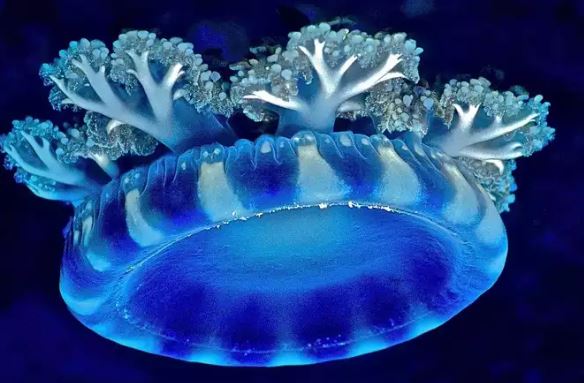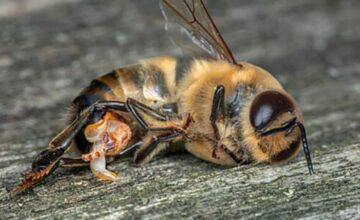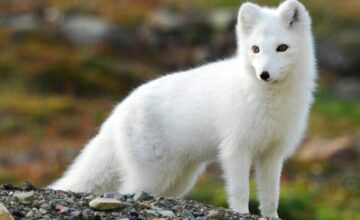
Sleep is a vital process for most living beings, as it helps them to restore their energy, heal their bodies, and consolidate their memories.
However, there are some animals that can survive without sleep, or at least without the conventional form of sleep that we are familiar with.
These animals have adapted to their environments and lifestyles in such a way that they can stay awake for long periods of time, or rest in different ways.
Here are 10 examples of animals that don’t sleep, or have very unusual sleep habits.
1. Dolphin
Dolphins are marine mammals that belong to the scientific family Delphinidae. They are highly intelligent and social animals, and they need to stay alert for predators and prey. To do this, dolphins have developed a special mechanism called unihemispheric sleep, which allows them to sleep with one half of their brain at a time, while the other half remains awake. This way, they can keep swimming, breathing, and monitoring their surroundings. Dolphins can also control their eye movements, and keep one eye open while the other is closed. Newborn dolphins and their mothers don’t sleep at all for the first month of their lives, as they need to bond and protect each other.
2. Orca
Orcas, also known as killer whales, are the largest members of the dolphin family and apex predators of the ocean. Living in pods of up to 40 individuals, they exhibit strong social bonds and cooperative behavior. Like dolphins, orcas utilize unihemispheric sleep to rest without losing consciousness, ensuring continuous vigilance. During their early months of life, newborn orcas forego sleep to regulate body temperature and follow their mothers closely. Communication within orca pods is intricate, involving a variety of sounds and potentially different dialects, facilitating coordinated hunting and social interactions.
3. Fruit fly
Fruit flies, scientifically classified as Drosophila, are pivotal organisms in genetic research, mirroring many human genes and traits. Despite their brief lifespans, lasting only a few days to weeks, they adhere to a circadian rhythm regulating their daily activities. Notably, some fruit flies exhibit extraordinary resistance to sleep deprivation, with certain individuals capable of surviving their entire lives without sleep, while others require only minimal rest. Remarkably, scientists have found that sleep deprivation has no discernible impact on their lifespan or overall health, underscoring the complexity of sleep regulation mechanisms in these tiny yet resilient insects.
4. Alpine swift
Alpine swifts, part of the Tachymarptis genus, are medium-sized birds native to Europe, Asia, and Africa, migrating to warmer regions during winter. Known for their remarkable flying skills, they can reach speeds of up to 200 km/h and sustain flight for up to six months without landing. During this time, they eat, mate, and even sleep in the air. Scientists have discovered that alpine swifts enter a state of torpor while flying, reducing their metabolic rate and body temperature to conserve energy. They also adjust their wing movements and flight patterns to save energy and navigate obstacles efficiently.
5. Bullfrog
Bullfrogs are large amphibians that belong to the scientific genus Lithobates. They are native to North America, but they have been introduced to other continents as well. They are carnivorous and opportunistic animals, eating anything that fits in their mouths, including insects, fish, rodents, birds, and even other frogs. Bullfrogs are also known for their loud and deep calls, which they use to attract mates and defend their territories. Bullfrogs don’t need sleep, as they don’t have a sleep-wake cycle. Instead, they enter a state of dormancy, which is a period of inactivity and lowered metabolism. They can do this during the day or night, depending on the temperature and humidity. They can also hibernate during the winter, by burying themselves in the mud and slowing down their heart rate and breathing.
6. Bluefish
Bluefish, scientifically classified as Pomatomus, inhabit temperate and tropical waters globally, displaying migratory habits and predatory tendencies. With a reputation for voracious feeding and aggressive behavior, they consume various marine lifeforms, including fish, crustaceans, and squid. Capable of swift swimming at speeds up to 70 km/h, they cover vast distances in search of prey. Unlike many species, bluefish do not sleep, as their continuous movement is crucial for breathing and hunting. Their lateral line organ, composed of sensory cells, aids in detecting vibrations and movements in water, facilitating prey location and predator avoidance.
7. Tilapia
Tilapia are freshwater fish that belong to the scientific family Cichlidae. They are native to Africa and the Middle East, but they have been introduced to other regions as well. They are one of the most popular and widely consumed fish in the world, as they are easy to farm and have a mild flavor. They are also very adaptable and resilient, as they can survive in various water conditions and temperatures. Tilapia don’t sleep, as they don’t have a pineal gland, which is a small organ that produces melatonin, a hormone that regulates sleep and circadian rhythm. Instead, they have periods of rest and activity, which depend on the light and temperature. They can also change their color and behavior to blend in with their environment and avoid predators.
8. Upside-down jellyfish
Upside-down jellyfish, belonging to the scientific genus Cassiopea, inhabit warm and shallow waters worldwide, distinguished by their unique behavior of resting upside-down on the seafloor. This peculiar posture allows them to expose their symbiotic algae, zooxanthellae, to sunlight, from which they derive nutrients and oxygen. Their upward-facing tentacles serve the dual purpose of catching plankton and small organisms while in this position. Unlike many creatures, upside-down jellyfish do not sleep due to the absence of a brain or nervous system. Instead, they rely on a network of nerve cells to coordinate movements and responses. Additionally, they possess the ability to pulsate their bell, the dome-shaped part of their body, generating water currents to facilitate movement.
9. Sea urchin
Sea urchins are marine animals that belong to the scientific class Echinoidea. They are related to starfish and sea cucumbers, and they have a hard shell covered with spines. They are found in all oceans and depths, and they feed on algae, coral, sponges, and other organic matter. They are also important for the ecosystem, as they help to control the growth of algae and provide habitats for other animals. Sea urchins don’t sleep, as they don’t have a brain or eyes. Instead, they have a nerve ring that surrounds their mouth and connects to their tube feet, which are small appendages that help them to move and sense their environment. They can also change their color and shape to camouflage and protect themselves.
10. Sea sponge
Sponges, aquatic animals classified under the scientific phylum Porifera, represent the simplest and most ancient life forms on Earth, with a lineage dating back over 500 million years. Sessile in nature, they anchor themselves to rocks, coral, or other substrates, lacking mobility. Their porous bodies facilitate the flow of water, allowing them to filter and extract food and oxygen, while waste and excess water are expelled through an opening known as the osculum. Remarkably, sponges do not experience sleep, as they lack a brain, nervous system, or conventional organs. Instead, they rely on specialized cells to fulfill various functions, including digestion, reproduction, and defense. Furthermore, sponges demonstrate an extraordinary ability to regenerate and heal themselves in response to damage or injury, underscoring their resilience and adaptability in the marine environment.




